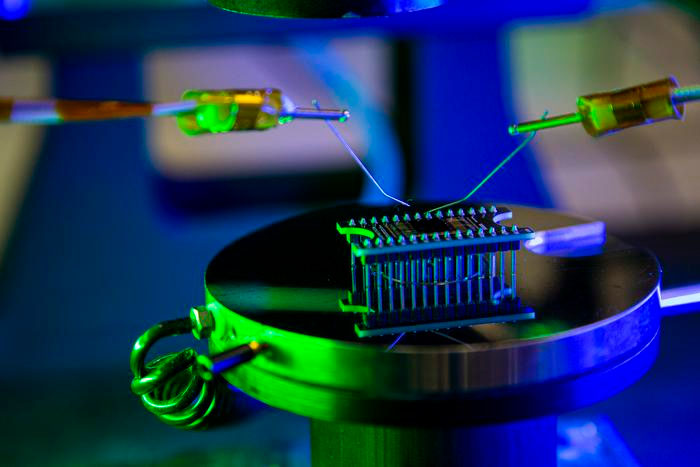Neuromorphic Engineering: Bridging Neuroscience and Artificial Intelligence
What is Neuromorphic Engineering?
Neuromorphic engineering is an interdisciplinary field that combines principles from neuroscience, computer science, and electrical engineering to design artificial neural systems, often referred to as neuromorphic computing. The goal is to create hardware and software that emulate the structure and function of biological neural networks, such as the human brain. By mimicking the brain's ability to process information, adapt, and learn, neuromorphic systems aim to achieve energy-efficient and intelligent computing.

Key Concepts in Neuromorphic Engineering
Neuromorphic engineering encompasses several key concepts that draw inspiration from the brain:
Spiking Neural Networks
Spiking neural networks (SNNs) are a central component of neuromorphic systems. Unlike traditional artificial neural networks, SNNs use spikes or pulses to transmit information, similar to the way neurons communicate in the brain. This spike-based computation enables temporal processing and energy efficiency, as computation occurs only when necessary.
Synaptic Plasticity
Synaptic plasticity refers to the ability of synapses (the connections between neurons) to strengthen or weaken over time based on the activity of the connected neurons. This process is believed to underlie learning and memory in biological brains. Neuromorphic systems aim to incorporate synaptic plasticity mechanisms, such as spike-timing-dependent plasticity (STDP), to enable adaptive learning and self-organization.
Asynchronous and Event-Driven Computation
In contrast to traditional synchronous computing, neuromorphic systems often employ asynchronous and event-driven computation. This means that computations are triggered by specific events or spikes rather than being governed by a global clock. Asynchronous computation allows for more efficient power consumption and enables the system to handle real-time, continuous data streams.
Hardware Implementations
Neuromorphic engineering has led to the development of specialized hardware platforms that emulate the brain's architecture:
Neuromorphic Chips
Neuromorphic chips are at the heart of neuromorphic computing. These integrated circuits are designed to implement spiking neural networks, providing the foundation for brain-inspired computing processes. These chips contain artificial neurons and synapses that communicate through spikes. Examples of neuromorphic chips include IBM's TrueNorth, Intel's Loihi, and the BrainScaleS system. These chips offer high parallelism, low power consumption, and the ability to perform complex computations.
Memristors
Memristors are nanoscale devices that can store and process information in a manner analogous to biological synapses. They exhibit variable resistance states based on the history of applied voltage or current, making them suitable for implementing synaptic plasticity in neuromorphic systems. Memristor-based neuromorphic hardware has the potential to achieve high density, low power consumption, and fast switching speeds.
Applications of Neuromorphic Engineering
Neuromorphic engineering has potential applications in various domains:
Intelligent Sensors and Edge Computing
Neuromorphic systems can be used to develop intelligent sensors that process and analyze data at the edge, reducing the need for data transmission to centralized servers. This is particularly useful in applications such as autonomous vehicles, smart cities, and industrial monitoring, where real-time processing and low latency are crucial.
Brain-Machine Interfaces
Neuromorphic engineering can contribute to the development of advanced brain-machine interfaces (BMIs). By emulating the brain's processing capabilities, neuromorphic systems can enable more natural and efficient communication between the brain and external devices. This has implications for neural prosthetics, rehabilitation, and augmented cognition.
Robotics and Autonomous Systems
Neuromorphic systems can enhance the capabilities of robots and autonomous systems by providing energy-efficient and adaptive computing. By incorporating neuromorphic processors and sensors, robots can process sensory information, learn from their environment, and make decisions in real-time, enabling more intelligent and autonomous behavior.
Challenges and Future Directions
While neuromorphic engineering has made significant progress, there are still challenges to overcome. One of the main challenges is the limited understanding of how the brain processes information at different scales. Bridging the gap between neuroscience and engineering requires further research to unravel the brain's computational principles and translate them into hardware and software designs.
Future research in neuromorphic engineering will focus on developing more biologically plausible models and hardware architectures. This includes incorporating features such as dendritic computation, neuromodulation, and learning mechanisms that are observed in biological brains. Additionally, efforts will be made to scale up neuromorphic systems to handle more complex tasks and to integrate them with conventional computing systems for hybrid intelligence.
Further Reading
Advanced Materials, Neuromorphic Engineering: From Materials to Device Application
Neuromorphic Computing and Engineering, 2022 roadmap on neuromorphic computing and engineering
